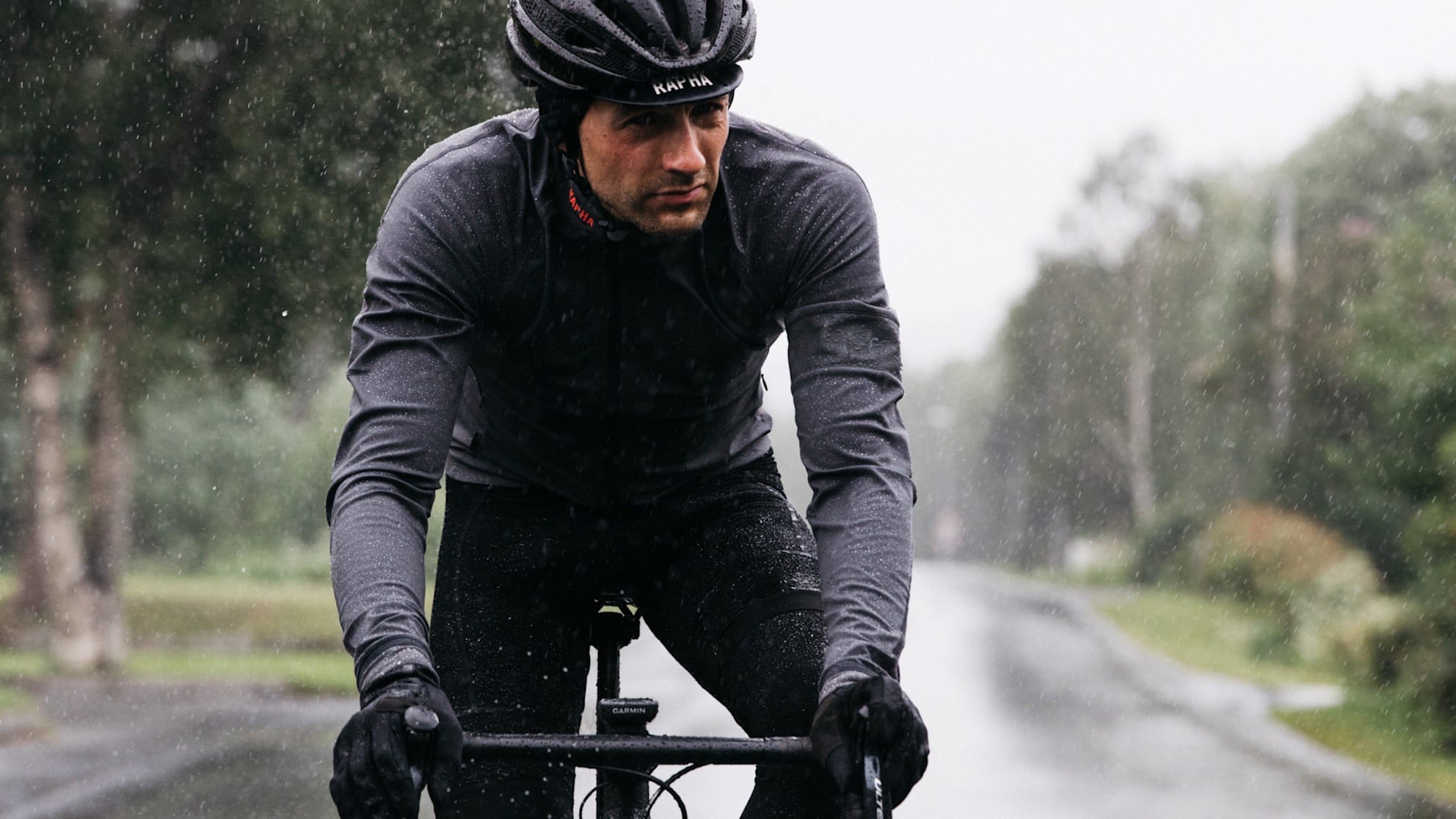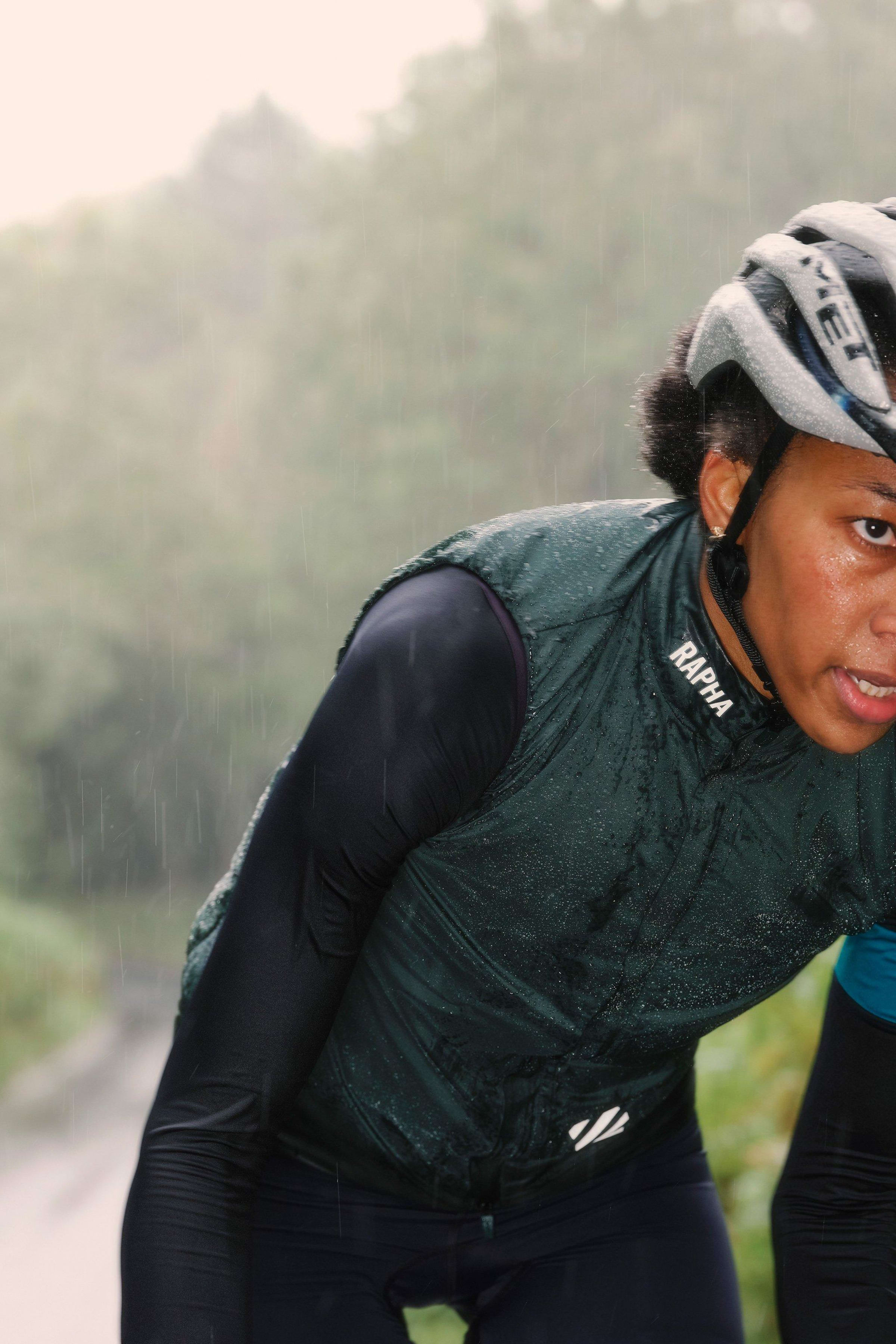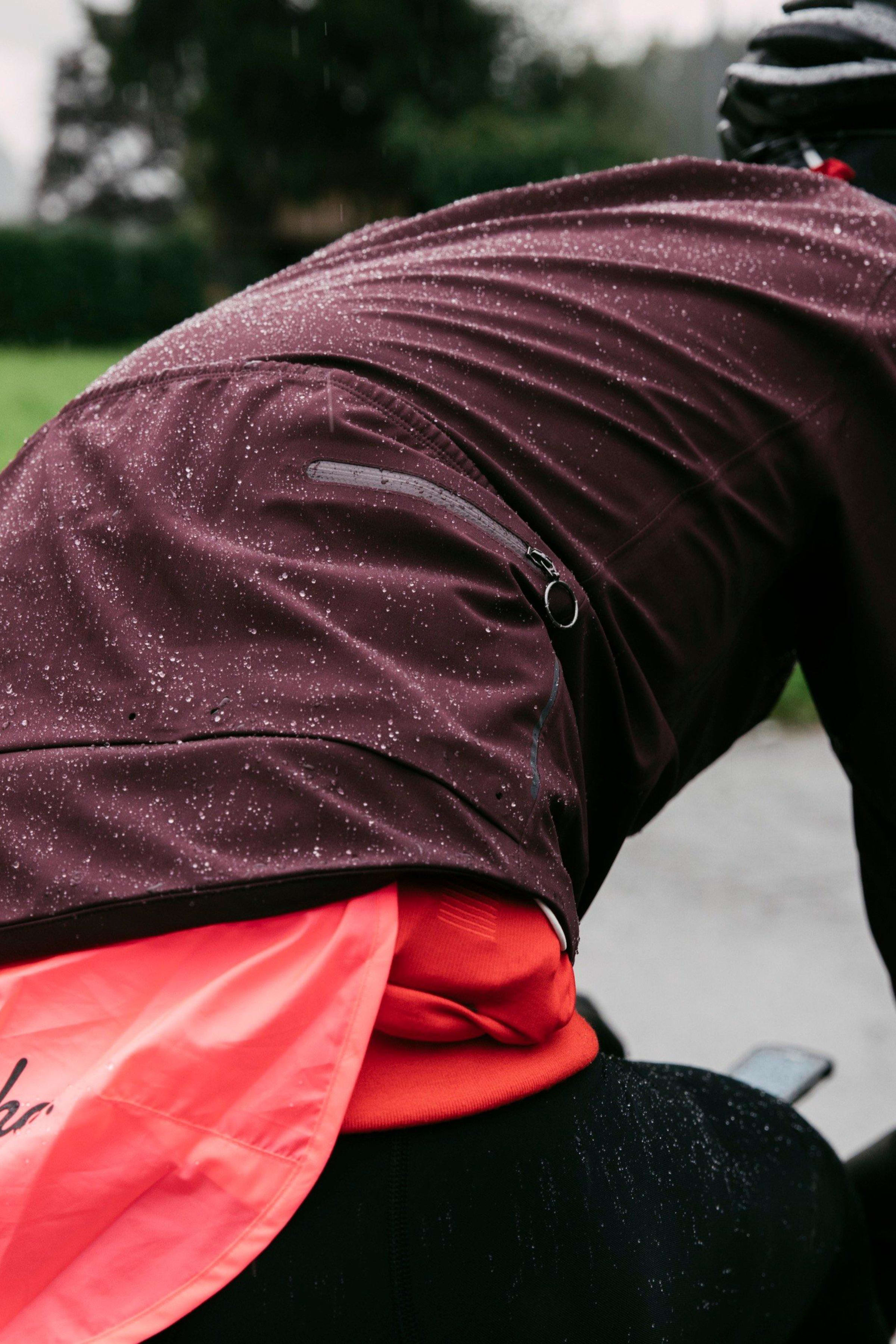Getting caught out in a downpour is something all cyclists should be prepared for. But while riding in the rain comes with the territory, there are a broad range of garments out there that can minimise just how wet you get.
Water-Repellent VS Waterproof
Though it might seem like an obvious distinction, the difference between waterproof and water-repellent garments can be key out on the road. Made with a multi-layer construction in which a waterproof membrane is sandwiched between a durable outer fabric and a soft inner fabric, waterproof garments provide complete protection from rain and road spray.
Water-repellent garments tend to be made with lighter, more breathable materials treated with a durable water-repellent (DWR) coating to provide added weather protection. What kind of garment you choose depends on the weather outside. On days when the weather is set in, waterproof garments are preferable. In changeable conditions, a water-repellent garment might provide a little more versatility.
How Water-Repellent Garments Degrade
Whether you choose a waterproof garment or a water-repellent one, almost all foul weather clothing relies, at least in part, on a DWR treatment to keep you dry. There are many ways water repellency degrades over time, from regular wear and tear and the build up of sweat and dirt to abrasion from backpacks and detergents that contain silicates, but by regularly reproofing your garment, you can restore its original level of performance.








